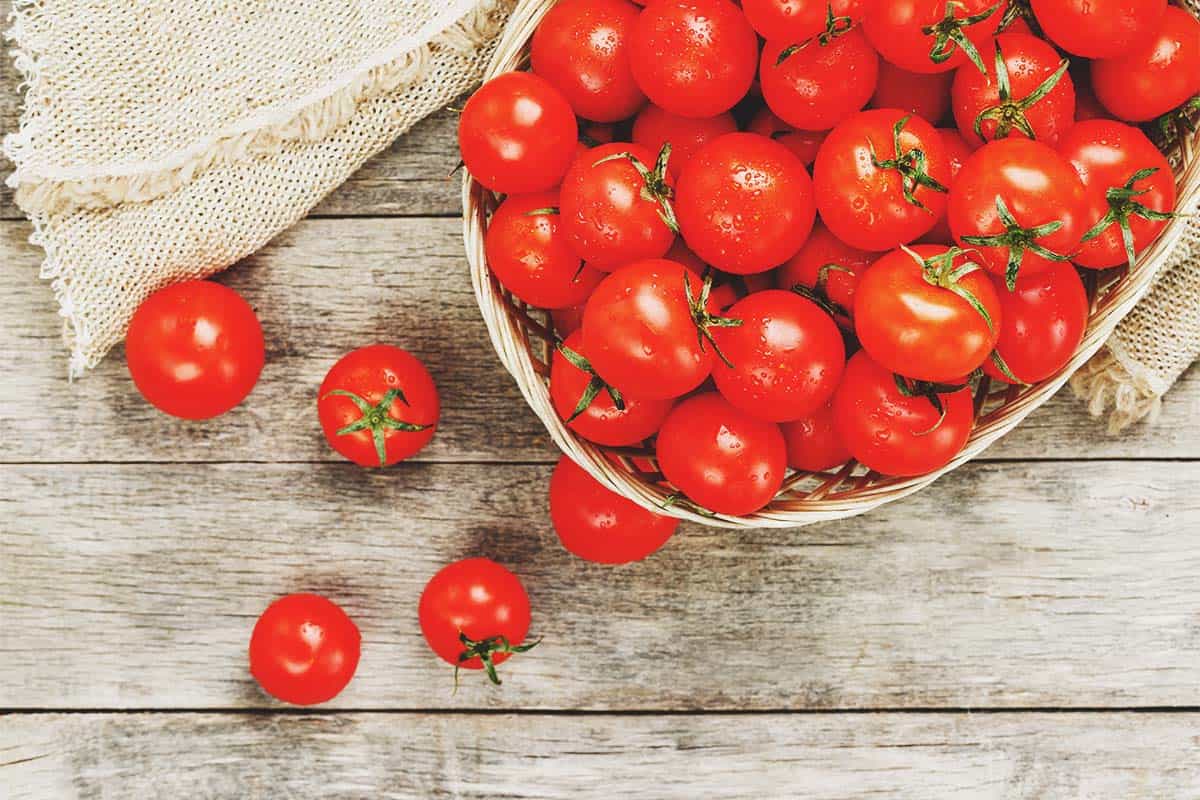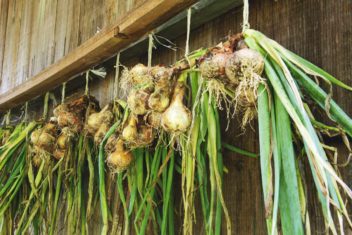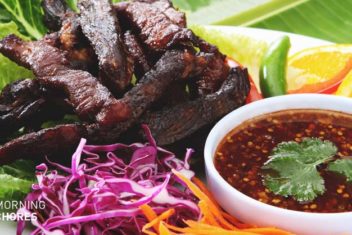What do you think of when you picture a tomato? Is it a big, juicy beefsteak, a tiny cherry tomato, or perhaps a firm Roma? You might not realize it, but each of these are actually types of tomatoes with hundreds of sub-varieties. Each type has a unique flavor profile that can be used differently in your kitchen.
Tomatoes are one of my favorite foods. They’re versatile; you can grill, roast, sautee, and puree them. Tomatoes make a healthy snack that is full of antioxidants and vitamins.
However, not all tomatoes are the same. Most of us know that there are hundreds of different tomato varieties, but many people don’t realize that these varieties fit into 7 main categories. They grow in different habits and come in different shapes, sizes, and even colors. That’s right; not all tomatoes are red! You can find pink, green, orange, and even white tomatoes.
Why does this matter? Because once you know the characteristics of each variety, you can easily choose the right type of tomato to put in your garden based on your needs.
So let’s take a look at the different types of tomatoes you can grow in your garden and how to use each one.
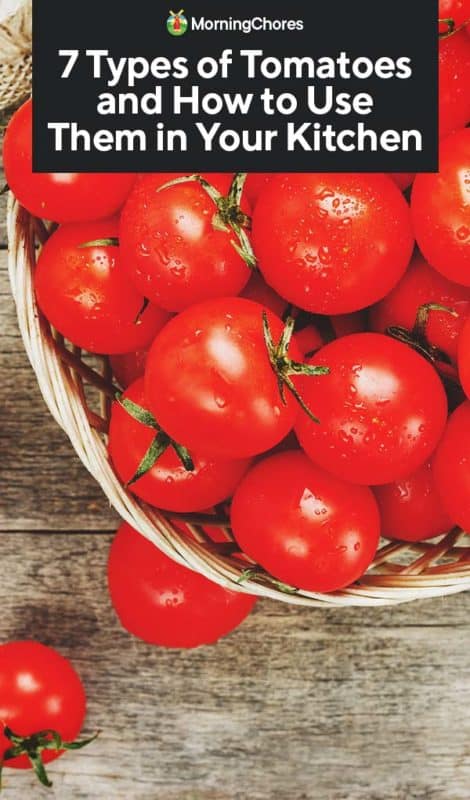
Indeterminate vs. Determinate Growth Habits
Tomato plants have 2 possible growth habits. Understanding the differences helps you select the right plant for your garden and to provide adequate support.
Determinate Tomatoes
Determinate tomatoes grow to a determined height – hence the name – typically around 2-3-feet tall. Once the plants reach this height, they set fruit and ripen. These plants rarely require staking, and they don’t produce fruit all summer long.
If you have a limited amount of growing space or plan to grow tomatoes in a pot, pick a determinate variety. Also, this type is excellent for cold-climate gardeners who need to harvest their crops quickly.
Indeterminate Tomatoes
Indeterminate tomatoes keep growing taller and taller, so they need more support, such as cages or stakes. Throughout the growing season, these plants continue to set and ripen fruit until they’re killed by frost. Indeterminate tomatoes require more attention from the gardener.
If you have plenty of space to grow the tomatoes and want to pick your tomatoes over several months, an indeterminate variety works best. Just don’t forget the stakes, cages, or ladders!
The 7 Types of Tomatoes and How to Use Them in Your Kitchen
1. Grape Tomatoes
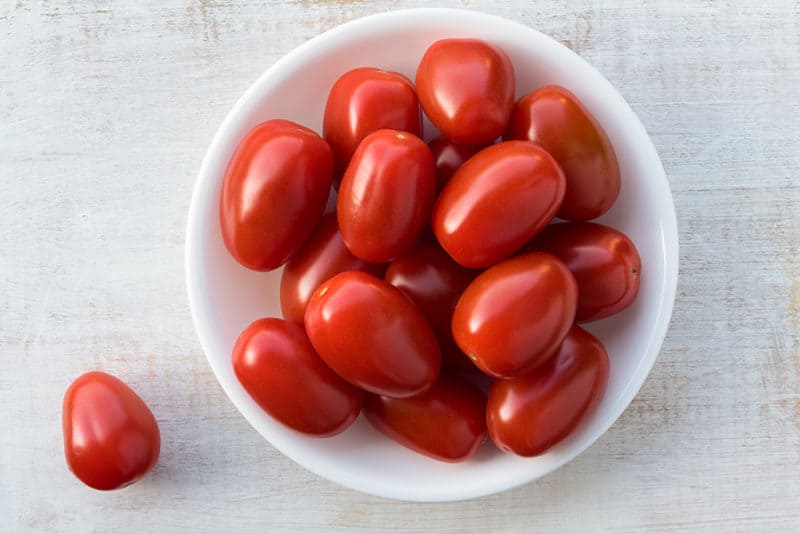
Who doesn’t love grape tomatoes? They’re crisp and crunchy with a range of flavors, from sweet to tangy. Grape tomatoes come in a variety of colors, and they have thick skin, which surrounds their meaty interior.
Most grape tomatoes are determinate plants that are compact and grow well in pots. They’re great for new gardeners, and those without a lot of space since most plants only reach 3-feet tall and aren’t as fussy as some types.
How to Use Grape Tomatoes
Since these types of tomatoes have a thicker texture, use them in your main dish. You can roast them in the oven, toss them into pasta, or put them on the side of your chicken, fish, or steak.
Don’t forget; these are great for snacking! Pop them into your mouth and enjoy it.
Varieties
Santa, ruby, jellybean, golden sweet, sun gold, fantastico, sun sugar, and supersweet 100 are all good options.
2. Beefsteak Tomatoes
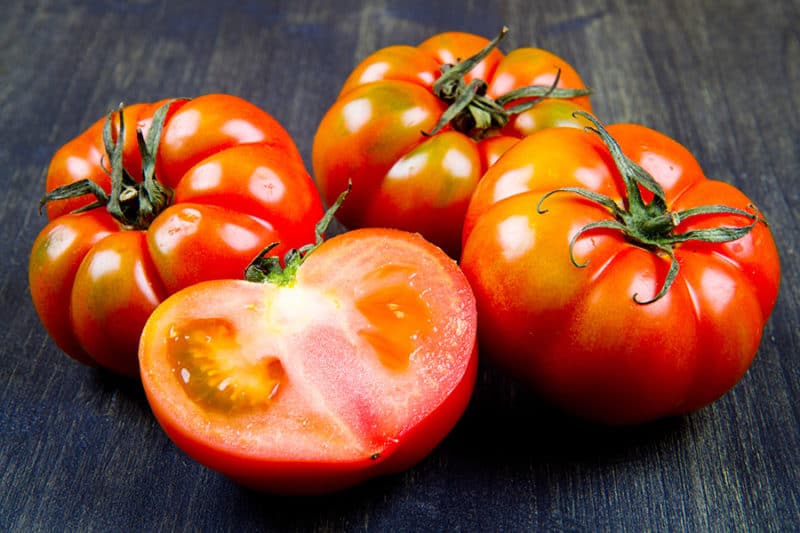
Without a doubt, red beefsteak tomatoes are the king of tomatoes. Some of these varieties can reach over 2lbs per tomato – crazy, right?
These are some of the most abundant cultivated tomatoes around. While most of them are red or pink, certain varieties of beefsteak tomatoes produce yellow, purple, or black tomatoes.
Beefsteak tomatoes are large, meaty, and juicy with a mild, not overwhelming flavor. In general, these tomatoes are firm with vibrant color, so they look fantastic in the garden. Most of the time, they’re indeterminate because the plants need to be large to support the massive tomatoes.
Keep in mind these tomatoes require a longer growing season and more heat than smaller tomatoes. If you have a short growing season or live in a region with cool summers, they might not be a suitable choice.
How to Use Beefsteak Tomatoes
Since these tomatoes are juicy, you can use them for the base of fresh tomato sauce and dips. They’re the best tomato to use for salsa. Also, since their flavor isn’t too overwhelming, you can slice these tomatoes up for hamburgers or BLTs.
Varieties
A popular variety of beefsteak is the pink-fleshed Brandywine. Beefmaster, mortgage lifter, Cherokee purple, big beef, and black krim all get high marks as well.
3. Cocktail Tomatoes
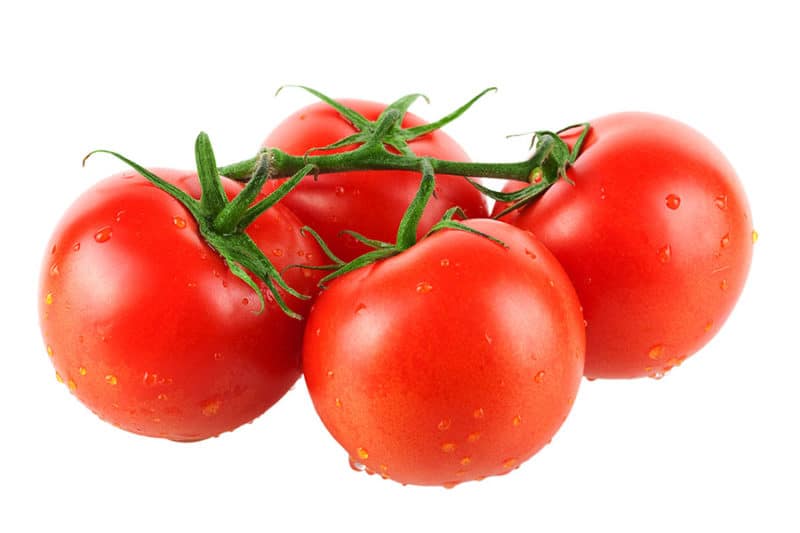
Cocktail tomatoes are the classic red fruit that you might envision when you think of a tomato. Often, they’re called slicers since you can slice them for sandwiches, but they’re quite versatile.
They’re sweet and slightly fruity, making them suitable for a range of dishes. Most of the time, they’re averaged sized and soft-walled with a few seeds. Cocktail tomatoes are meaty and juicy, with the traditional tomato flavor you crave.
Slicing tomatoes can be determinate or indeterminate plants, depending on the variety you pick. Make sure to read the seed packet if you want one or the other.
How to Use Cocktail Tomatoes
Since they have soft walls and a meaty texture, these tomatoes are one of the best for creating sauces, grilling, or stuffing with meats and vegetables. You can dice them up into salads or roast in the oven with olive oil and herbs.
Varieties
Mountain magic, black prince, and clementine are all tried-and-true varieties.
4. Roma Tomatoes

Roma tomatoes are often called paste tomatoes, and they’re the quintessential Italian plum tomato. They are full of delicious flavors, with a tangy, fresh tomato taste.
You’ll find that Roma tomatoes are meaty with only a few seeds. Unlike other tomatoes, this type is denser with a grainier flesh. They’re not soft, and Romas have high pectin content without much juice. If you’re looking for a juicy tomato, these aren’t for you, but the lower moisture content does extend their shelf life.
How to Use Roma Tomatoes
These tomatoes are ideal for sauce, tomato paste, and stews. For an intense flavor, you can roast Roma tomatoes in the oven or use them to create a delicious bruschetta topping. These are versatile and can be used in many ways.
Perhaps the best way to use them is in tomato sauce because the lower juice content and higher pectin levels help to thicken the sauce naturally. Using Roma tomatoes will decrease the cooking time needed to evaporate the excess juices.
Varieties
Heinz is a classic variety that lends itself nicely to sauces. Red Italian pear, Amish paste, Martino’s, and San Marzano are also worth planting.
5. Green Tomatoes
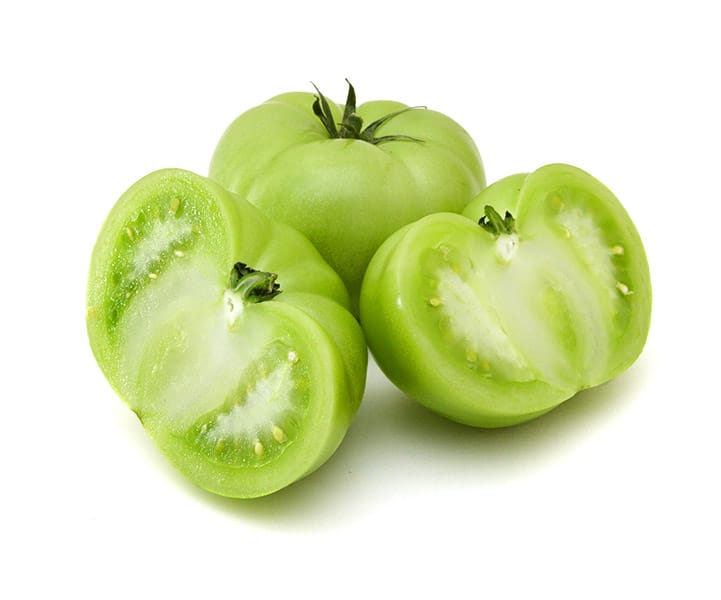
You might associate green tomatoes with an unripened tomato, and in many cases, that would be an accurate assumption. However, some varieties of tomatoes stay green, even when they’re ripe.
These tomatoes are unique with a tart and tangy flavor that is quite distinct. The great thing about green tomatoes is they come in all shapes and sizes, so you can find bigger or smaller varieties. You can find some that are determinate and some that are indeterminate.
How to Use Green Tomatoes
Since green tomatoes have a unique flavor, they can be paired with other varieties or used as a twist for juicing, sandwiches, salsas, or even hot sauces. Don’t forget fried green tomatoes; they’re a classic!
You can even find recipes that use green tomatoes in desserts or pies! I know that sounds strange, but they’re quite delicious. Green tomatoes are a substitute in any recipe that calls for Granny Smith apples!
Varieties
Try out emerald evergreen, green giant, green zebra, and Wagner blue-green tomato.
6. Heirloom Tomatoes
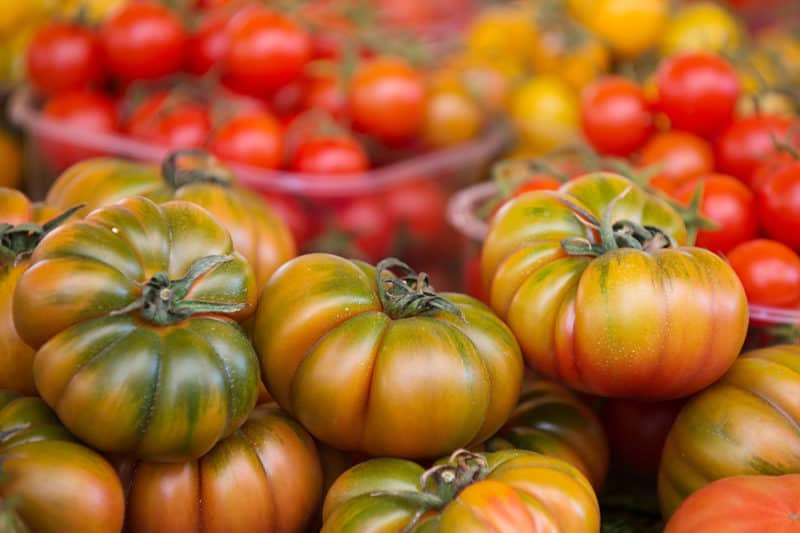
You can get back to your roots by using and growing heirloom tomatoes. These ones are passed down throughout generations. Unlike hybrid tomatoes that come from different cross-bred tomato strains, heirlooms can be traced down to a single genetic line, so you can think of them as purebred tomatoes.
Most of these varieties are praised for their superior taste and texture and come in a wide range of sizes and vibrant colors. Heirloom tomatoes are rich in flavor, so they’re often one of the best to add a kick to your dishes.
These tomatoes are meaty, firm, and deep in color. Plus, they have a range of textures and colors. They vary in flavor from sweet to tangy or juicy. The only negative is that heirloom tomatoes since they come from a single strain, have a shorter shelf life and less resistance to diseases.
How to Use Heirloom Tomatoes
These tomatoes make fantastic additions to sandwiches and salads. Try grilling or roasting them as a side dish. They’re delicious raw with drizzled olive oil and a bit of basil and salt. That’s a serious yum!
Varieties
Ferris wheel, Kellogg’s breakfast, Lillian’s yellow, Lucky cross, and yellow oxheart are stand-out options.
7. Cherry Tomatoes
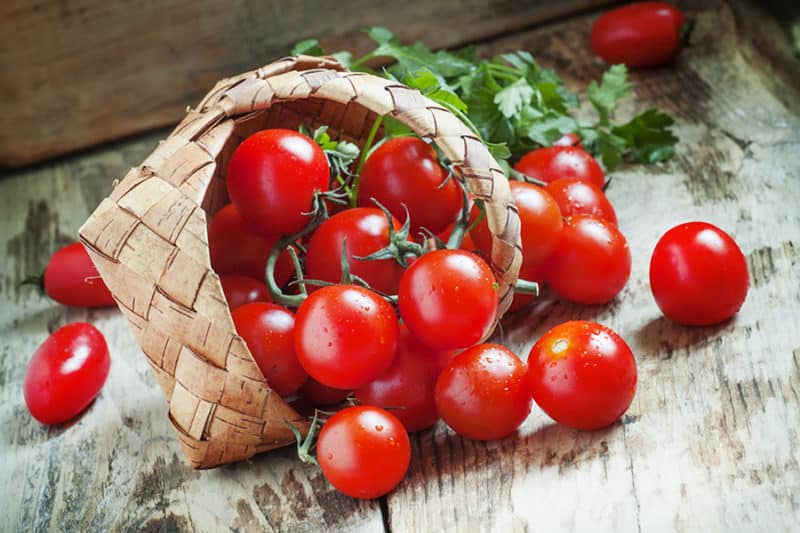
Tomato lovers everywhere rave over their versatility and flavor of cherry tomatoes. They come in red, orange, yellow, purple, and even black varieties.
Cherry tomatoes are great for cool, alpine, or short-summer gardens because they produce and ripen fast. They’re suitable for growing tomatoes in containers, and many gardeners believe they have more disease resistance.
How to Use Cherry Tomatoes
Cherry tomatoes add a burst of color and flavor to any meal. They’re sweet and tangy, so you can cook, grill, dry, or sautee them. Kids and adults alike love to eat them as snacks as well!
Varieties
Sun gold, black cherry, fantastico, sunpeach, candyland red, isis, and snow-white are all reliable and flavorful.
Picking the Type of Tomato
Who knew there were so many types of tomatoes, right? It turns out, all of them are just a bit different. Whether you want tomatoes to make dozens of jars of tomato sauce or snacks for your kids, you need to pick the right types of tomatoes for your garden bed. Now, you know how to use them in your kitchen as well.
